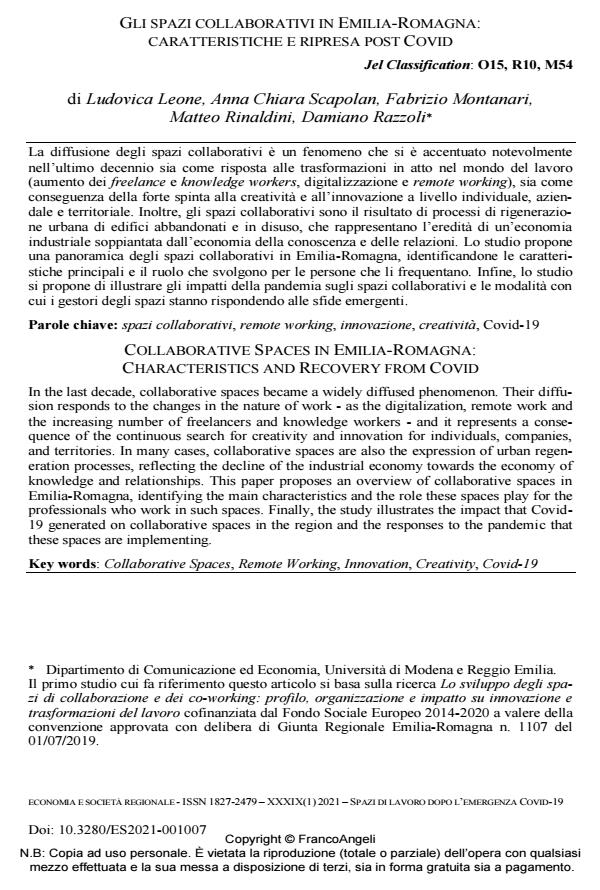Collaborative spaces in emilia-romagna: characteristics and recovery from covid
Journal title ECONOMIA E SOCIETÀ REGIONALE
Author/s Ludovica Leone, Anna Chiara Scapolan, Fabrizio Montanari, Matteo Rinaldini, Damiano Razzoli
Publishing Year 2021 Issue 2021/1
Language Italian Pages 13 P. 85-97 File size 269 KB
DOI 10.3280/ES2021-001007
DOI is like a bar code for intellectual property: to have more infomation
click here
Below, you can see the article first page
If you want to buy this article in PDF format, you can do it, following the instructions to buy download credits

FrancoAngeli is member of Publishers International Linking Association, Inc (PILA), a not-for-profit association which run the CrossRef service enabling links to and from online scholarly content.
In the last decade, collaborative spaces became a widely diffused phenomenon. Their diffu-sion responds to the changes in the nature of work - as the digitalization, remote work and the increasing number of freelancers and knowledge workers - and it represents a consequence of the continuous search for creativity and innovation for individuals, companies, and territories. In many cases, collaborative spaces are also the expression of urban regeneration processes, reflecting the decline of the industrial economy towards the economy of knowledge and rela-tionships. This paper proposes an overview of collaborative spaces in Emilia-Romagna, iden-tifying the main characteristics and the role these spaces play for the professionals who work in such spaces. Finally, the study illustrates the impact that Covid-19 generated on collabora-tive spaces in the region and the responses to the pandemic that these spaces are implement-ing.
Keywords: Collaborative Spaces, Remote Working, Innovation, Creativity, Covid-19
Jel codes: O15, R10, M54
Ludovica Leone, Anna Chiara Scapolan, Fabrizio Montanari, Matteo Rinaldini, Damiano Razzoli, Gli spazi collaborativi in Emilia-Romagna: caratteristiche e ripresa post covid in "ECONOMIA E SOCIETÀ REGIONALE " 1/2021, pp 85-97, DOI: 10.3280/ES2021-001007